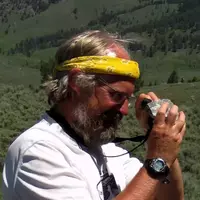Geo-Needs: A Synthesized Ideal Model for Broadening Participation in the Geosciences at Two-Year and Minority-Serving Institutions
Poster Session
Authors
 Andrew Bentley, University of Northern Colorado
Andrew Bentley, University of Northern Colorado
 Heather Petcovic, Western Michigan University
Heather Petcovic, Western Michigan University
 Xai Her, Northern Illinois University
Xai Her, Northern Illinois University
 Sheldon Turner, Triton College
Sheldon Turner, Triton College
 Nicole LaDue, Northern Illinois University
Nicole LaDue, Northern Illinois University
 Dave Mogk, Montana State University-Bozeman
Dave Mogk, Montana State University-Bozeman
 Tina Cartwright, Marshall University
Tina Cartwright, Marshall University
Employment opportunities in the geosciences are rapidly expanding, yet underrepresented minorities continue to make up ~8% of the geoscience-related workforce. Our project focuses specifically on the lack of geoscience programs at two year colleges (2YCs) and minority-serving institutions (MSIs). The Geo-Needs project has two overarching goals: (1) identify obstacles for starting or maintaining geoscience programs at 2YCs and MSIs, and (2) create an 'ideal model' of resources, partnerships, and other support to overcome these obstacles.
Focus groups held in August 2015 brought administrators, instructors, geoscience education resource providers, and education researchers together to discuss barriers, opportunities, and the ideal model. Attendees identified underpreparation of minority students for higher education, specifically in quantitative skills, as a barrier to participation in the geosciences. To overcome this barrier, participants recommended moving from a 'deficit' model of students (a focus on what students lack) to one that recognizes the skills and strengths that students bring to the educational setting. Participants also noted a need for professional development and support for instructors to prepare place-based curricula relevant to the lives and local situations of minority students. Finally, participants recognized a need for more proactive marketing of geoscience opportunities both on and off campus by increasing their personal involvement in outreach, recruitment, and retention efforts.
The 'ideal model' developed by participants included faculty, students, administrators/staff, employers, local community, geoscience professional organizations, funding agencies, and geoscience research partners as stakeholders. Education researchers and resource providers were not perceived as stakeholders, but as facilitating stakeholder interactions. Connections between these stakeholders included funding, non-financial incentives, outreach, and information. For example, all models stressed a need for funding support from the geoscience workforce directly to students and geoscience departments. The 'ideal model' has the potential to be a framework for building and sustaining geoscience departments at MSIs and 2YCs.
Focus groups held in August 2015 brought administrators, instructors, geoscience education resource providers, and education researchers together to discuss barriers, opportunities, and the ideal model. Attendees identified underpreparation of minority students for higher education, specifically in quantitative skills, as a barrier to participation in the geosciences. To overcome this barrier, participants recommended moving from a 'deficit' model of students (a focus on what students lack) to one that recognizes the skills and strengths that students bring to the educational setting. Participants also noted a need for professional development and support for instructors to prepare place-based curricula relevant to the lives and local situations of minority students. Finally, participants recognized a need for more proactive marketing of geoscience opportunities both on and off campus by increasing their personal involvement in outreach, recruitment, and retention efforts.
The 'ideal model' developed by participants included faculty, students, administrators/staff, employers, local community, geoscience professional organizations, funding agencies, and geoscience research partners as stakeholders. Education researchers and resource providers were not perceived as stakeholders, but as facilitating stakeholder interactions. Connections between these stakeholders included funding, non-financial incentives, outreach, and information. For example, all models stressed a need for funding support from the geoscience workforce directly to students and geoscience departments. The 'ideal model' has the potential to be a framework for building and sustaining geoscience departments at MSIs and 2YCs.
